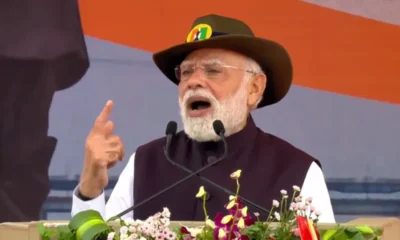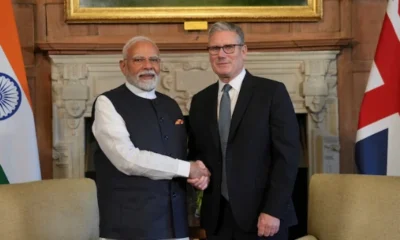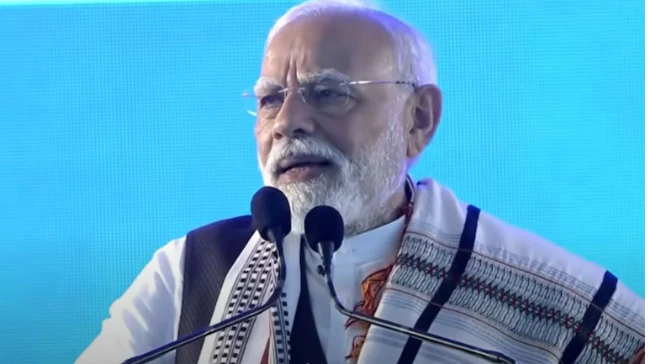[vc_row][vc_column][vc_column_text]Indicating a possible cessation of the slide in India’s Gross Domestic Product (GDP) seen over the last successive five quarters, government data released on Thursday, November 30, showed a growth rate of 6.3 per cent in the second quarter (July-September) of financial year 2017-18.
The figure for the previous quarter, April-June, had hit a three-year low of 5.7 per cent.
The GVA (Gross Value Added) to the economy stands at 6.1 per cent, up from 5.6 per cent in the last quarter.
Infrastructure output grew 4.7% in October from a year ago, driven by higher refinery production. The infrastructure output, comprising eight sectors such as coal, crude oil and electricity, accounts for nearly 40% of India’s industrial output.
The growth in output compares with a downwardly revised 4.7% year-on-year growth in September. During April-October, the annual output growth was 3.5%, data showed.
A government press release said: “The economic activities which registered growth of over 6.0 percent in Q2 of 2017-18 over Q2 of 2016-17 are ‘manufacturing’, ‘electricity, gas, water supply & other utility services and ‘trade, hotels, transport & communication and services related to broadcasting’.”
“The growth in the ‘agriculture, forestry and fishing’, ‘mining and quarrying’, ‘construction’ ‘financial, insurance, real estate and professional services’ and ‘Public administration, defence & other services’ is estimated to be 1.7 percent, 5.5 percent, 2.6 per cent, 5.7 percent and 6.0 percent respectively, during this period,” said the press release.
Addressing a press conference in New Delhi, Chief Statistician of India, Dr TCA Anant, said the recovery of GDP growth to 6.3% in Q2 from a 3-year low of 5.7% in Q1, after almost 5 quarters of decline, “marks a reversal which is very encouraging”.
“Manufacturing growth has been one of the main reasons for the encouraging growth rate figure of 6.3 per cent for 2nd Quarter,” he added.
Replying to a question on how the implementation of GST has impacted the GDP, Anant said “it introduced a measure of statistical challenge for us” while calculating the growth rate.
He said the tax collection data is still being updated and current calculation was made on reported tax collections.
Welcoming the numbers, former union finance minister P Chidambaram, struck a note of caution:
“Happy that the July-Sep quarter has registered a growth rate of 6.3%. This a PAUSE in the declining trend of the last five quarters. But we cannot say now whether this will mark an upward trend in the growth rate. We should wait for the growth rates over the next 3-4 quarters before we can reach a definite conclusion,” he said in a series of tweets.
Senior BJP leader and former finance minister Yashwant Sinha, who had criticised Modi government’s handling of economy, tweeted: “India must grow at 8% to 10% to create the jobs we need for our youth. But let us celebrate 6.3% as a great achievement of our government. All our problems now stand resolved.”
“Agri production has declined sharply, manufacturing has fallen, construction is down yet wait to see how we go gaga over this figure of growth,” he said in another tweet.
Earlier this month, rating agency Moody’s – which upgraded India’s credit rating to Baa2 from Baa3 and changed its India outlook to positive from neutral – said it expected the economy to grow at 6.7 per cent this fiscal and rise to 7.5 per cent in 2018-19.
Earlier in the day, the stock market saw a sharp slump, dropping over 450 points. Reliance Industries, SBI and ICICI bank were among those who recorded loses.
Finance Minister Arun Jaitley on Thursday asserted that improved macroeconomic fundamentals have placed India on the growth trajectory and the country would have to invest heavily in infrastructure over the next two decades to graduate to a middle-income economy.
The bounce back in economy was widely expected as there were clear signs of the businesses coming out of the slowdown caused by demonetisation and the roll out of GST, said media reports. A Reuters poll of economists had predicted a growth rate of 6.4 per cent, while various other bodies projected the rate between 5.9 per cent and 7.1 per cent.
Other indicators like passenger vehicle and tractor sales, industrial production, electricity generation and rail cargo were all reported to have accelerated in the past few months. Big companies have also largely adjusted to the changes while benefiting from reduced logistics costs. Prominent Indian firms had their best profit growth in last six quarters in July-September, according to Thomson Reuters data. According to the data, Indian companies’ total profits are expected to grow 25% in the next fiscal year, which would be the highest in Asia.
However, concerns still remain on the consumption and private investment front which have failed to pick up despite the economy staging a comeback of sorts. Also, the finance ministry has been unsuccessful in convincing RBI for a cut in key policy rates. Analysts on the contrary say that rising global oil prices could pinch consumers through higher inflation and may instead force the RBI to hike the rates in the second half of 2018, denting the growth momentum, according to media reports.[/vc_column_text][/vc_column][/vc_row]


 India News10 hours ago
India News10 hours ago
 India News11 hours ago
India News11 hours ago
 Entertainment7 hours ago
Entertainment7 hours ago
 India News13 hours ago
India News13 hours ago
 India News13 hours ago
India News13 hours ago
 India News8 hours ago
India News8 hours ago
 Latest world news6 hours ago
Latest world news6 hours ago
 India News8 hours ago
India News8 hours ago













